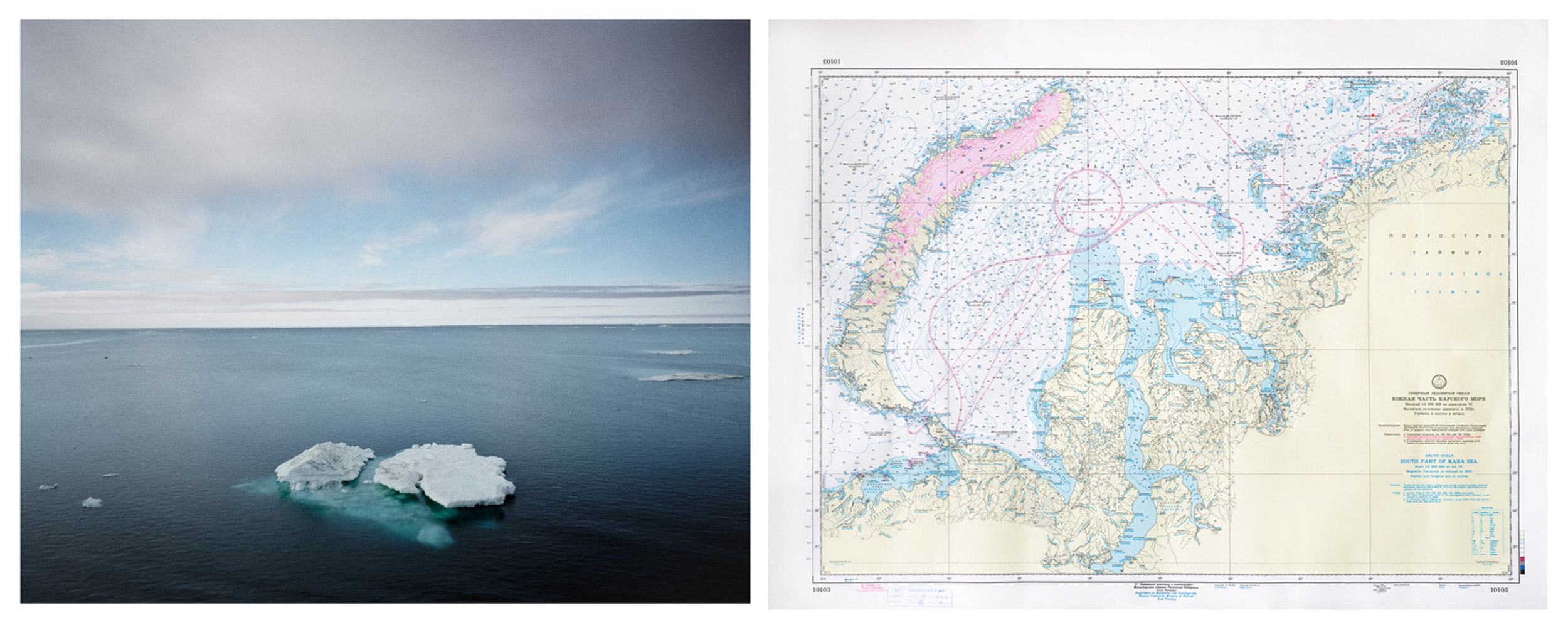Arctic Coordinates - tHe new Yorker (2012)
“Odyssey is a travel with a lot of trouble. Maybe this is also how life is”
Edison, AB (able seaman on board of the vessel)
“Life is whatever we make it. The traveller is the journey. What we see is not what we see but who we are” wrote Fernando Pessoa in his novel “The book of Disquiet”. Pessoa was an outstanding personage of Portuguese literary modernism who spent most of his life in Lisbon. This book is a result of Pessoa’s phlegmatic nature and rich imagination together with interest in philosophy and mysticism. His text, mixed up, seemingly unedited and disrupt, with different parts appearing one after another without any reasonable (rather sensitive) order asks why a human being is disquiet and how one tries to cope with it, in most cases vainly. What makes a human being search for new impressions, to run away from itself, to sink the routine of daily life and crave for travelling, moving from place to place, accumulating more images and information. The search of self and of intrinsic balance – this inner travelling inside one’s own mind – was very much related to physical travel in Pessoa’s work. Or rather to the lack of it. “What is travel and what use is it? One sunset is much like another... And what of the sense of freedom that travel brings? I can enjoy that just going from Lisbon to Benfica and I can feel it more intensely than someone who journeying from Lisbon to China because, in my opinion, if that sense of freedom is not in me, then it’s nowhere”, - he wrote in the Book of Disquiet. He was not searching for a travel. His world was constrained to the streets of his beloved city, where he knew every corner, and to the perplexed labyrinths of his mind, that produced a vision of places, that he’s never visited. He has reached all possible shores without having made a single journey, without changing scenery around, without receiving any stimuli from the outside. “A Modern Odyssey” is a project made during a real, non-invented, journey on the cargo ship Nordic Odyssey, transporting 70,000 tons of iron ore from the Russian port city Murmansk. It waded through the ice of the Arctic waters, led by an icebreaker, then crossed foggy Bering Strait and continued along the far-eastern parts of Russia and Japan before arriving to a newly built port on the shore of China. The trip took place in July and beginning of August of 2012 and lasted around one month. There were only 23 people on board of a ship 225 meters long, weighting around 40,000 tons – five Ukrainians officers, one ice pilot from Russia and seventeen Filipino seafarers. At first this journey seemed to be a unique chance to experience extraordinary landscapes and route (it’s only two years since it has been opened to navigation due to an increasing melting of ice caused by global warming). Though very soon the physical movement from one point to another becomes a journey into one’s consciousness and inward world. The project consists of a series of about 30 photographs (one photograph for each day, with GPS and UTC recorded for each picture), realized on color film with large format camera. Several pictures will be combined (framed together) with the navigation charts, used during the trip, showing the advance of the ship along the route. A multimedia combines interviews of the members of the crew with a poetic view of sea, ice and landscapes.
“It is only within us that landscapes become landscapes. That’s why if I imagine them, I create them. If I create them, they exist; if they exist, I see them just as I do other landscapes. So why travel? In Madrid, in Berlin, in Persia, in China, at the North and South Poles, where would I be other than inside myself, feeling my particular kind of feelings?
Editor: Elissa Curtis
Writer: Keith Gessen


































